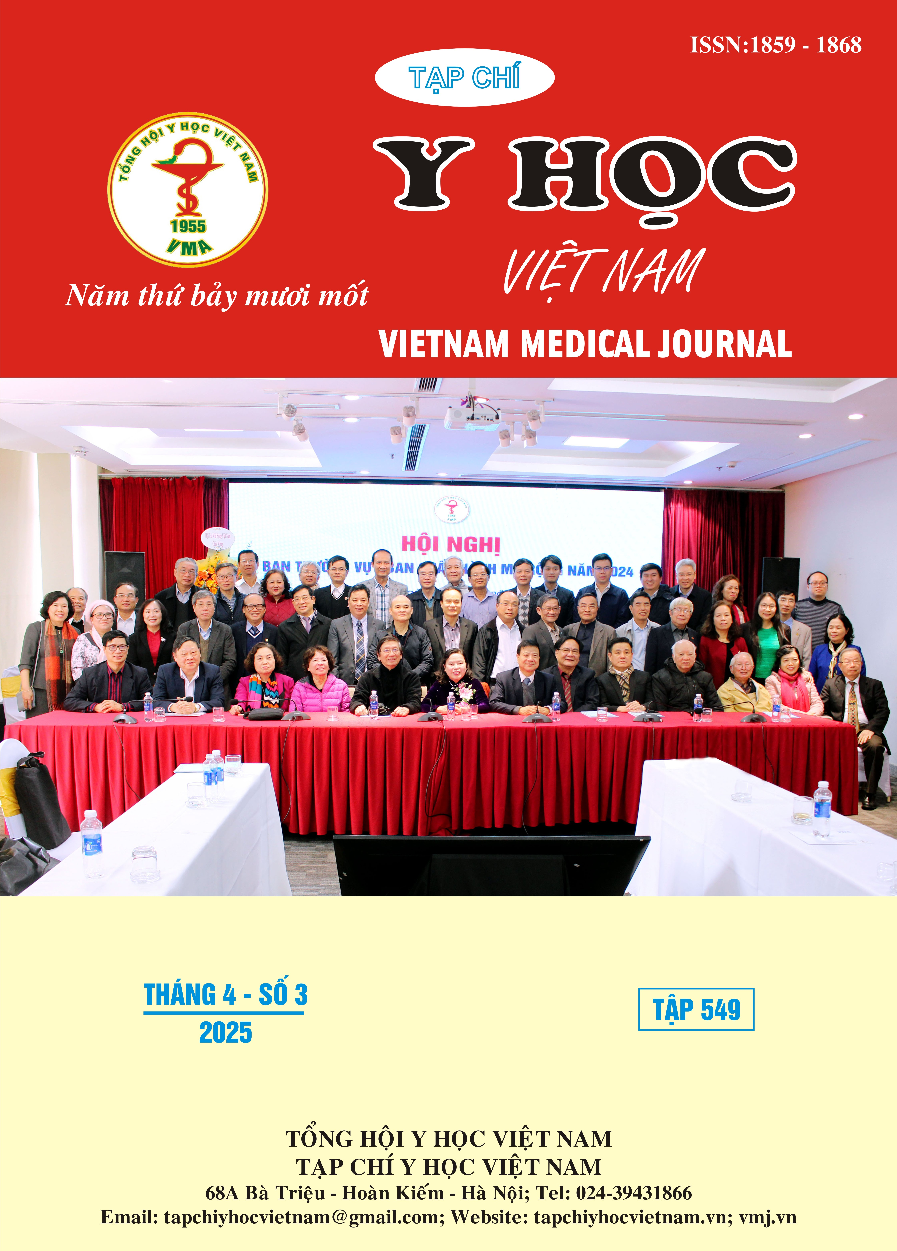OUTCOMES OF CORONARY INTERVENTION VIA RADIAL ARTERY ACCESS AT HANOI HEART HOSPITAL
Main Article Content
Abstract
Introduction: The radial artery approach in coronary intervention is favored due to its reduced complications, shorter hospital stays, and cost-effectiveness, although it requires high technical expertise and thorough evaluation. In Vietnam, research on this method remains limited, despite its routine application in major hospitals like Hanoi Heart Hospital. Objective: To describe the effectiveness, benefits, and complications of coronary intervention via radial artery access during the first 6 months of 2023 at Hanoi Heart Hospital. Methods: A cross-sectional descriptive study was conducted on 1,387 patients from January to June 2023, with data analyzed using SPSS 20.0. The study process included clinical examination, coronary angiography and intervention via a DSA system, and monitoring of clinical events and complications post-intervention. Results: The success rate was 96.8%, with 3.2% failures due to radial artery puncture issues (2.1%) and guidewire insertion failures (0.8%). Among the 1,387 patients, 52.6% underwent coronary interventions, primarily requiring one stent (80.4%). Post-procedure complications included hematoma (5.2%) and radial artery occlusion (1%), but there were no cases of major bleeding or limb ischemia, confirming the high safety profile of this method. Conclusion: The radial artery approach demonstrated high therapeutic efficacy, impressive success rates, and low complication rates, warranting broader adoption in clinical practice.
Article Details
Keywords
Radial artery, coronary angiography, coronary intervention, complications, interventional cardiology
References
2. Bertrand OF, Rao SV, Pancholy S, et al. Transradial Approach for Coronary Angiography and Interventions: Results of the First International Transradial Practice Survey. JACC: Cardiovascular Interventions. 2010;3(10):1022-1031. doi:10.1016/j.jcin.2010.07.013
3. Papadopoulos K, Kerner A, Yalonetsky S, Nikolsky E, Feld Y, Roguin A. Strategies to overcome challenges of transradial coronary angiography and intervention. RCM. 2020;21(4): 501-505. doi:10.31083/j.rcm.2020. 04.252
4. Bhat FA, Changal KH, Raina H, Tramboo NA, Rather HA. Transradial versus transfemoral approach for coronary angiography and angioplasty – A prospective, randomized comparison. BMC Cardiovascular Disorders. 2017;17(1):23. doi:10.1186/s12872-016-0457-2
5. Anjum I, Khan MA, Aadil M, Faraz A, Farooqui M, Hashmi A. Transradial vs. Transfemoral Approach in Cardiac Catheterization: A Literature Review. Cureus. 9(6):e1309. doi:10.7759/cureus.1309
6. Rao SV, Turi ZG, Wong SC, Brener SJ, Stone GW. Radial Versus Femoral Access. Journal of the American College of Cardiology. 2013;62(17):S11-S20. doi:10.1016/j.jacc.2013.08.700
7. Jolly SS, Yusuf S, Cairns J, et al. Radial versus femoral access for coronary angiography and intervention in patients with acute coronary syndromes (RIVAL): a randomised, parallel group, multicentre trial. Lancet. 2011;377(9775):1409-1420. doi:10.1016/S0140-6736(11)60404-2
8. Sandoval Y, Bell MR, Gulati R. Transradial Artery Access Complications. Circulation: Cardiovascular Interventions. 2019;12(11): e007386. doi:10.1161/CIRCINTERVENTIONS. 119.007386
9. Sandoval Y, Bell MR, Gulati R. Transradial Artery Access Complications. Circulation: Cardiovascular Interventions. 2019;12(11): e007386. doi:10.1161/CIRCINTERVENTIONS. 119.007386
10. Valgimigli M, Gagnor A, Calabró P, et al. Radial versus femoral access in patients with acute coronary syndromes undergoing invasive management: a randomised multicentre trial. Lancet. 2015;385(9986):2465-2476. doi:10.1016/ S0140-6736(15)60292-6


